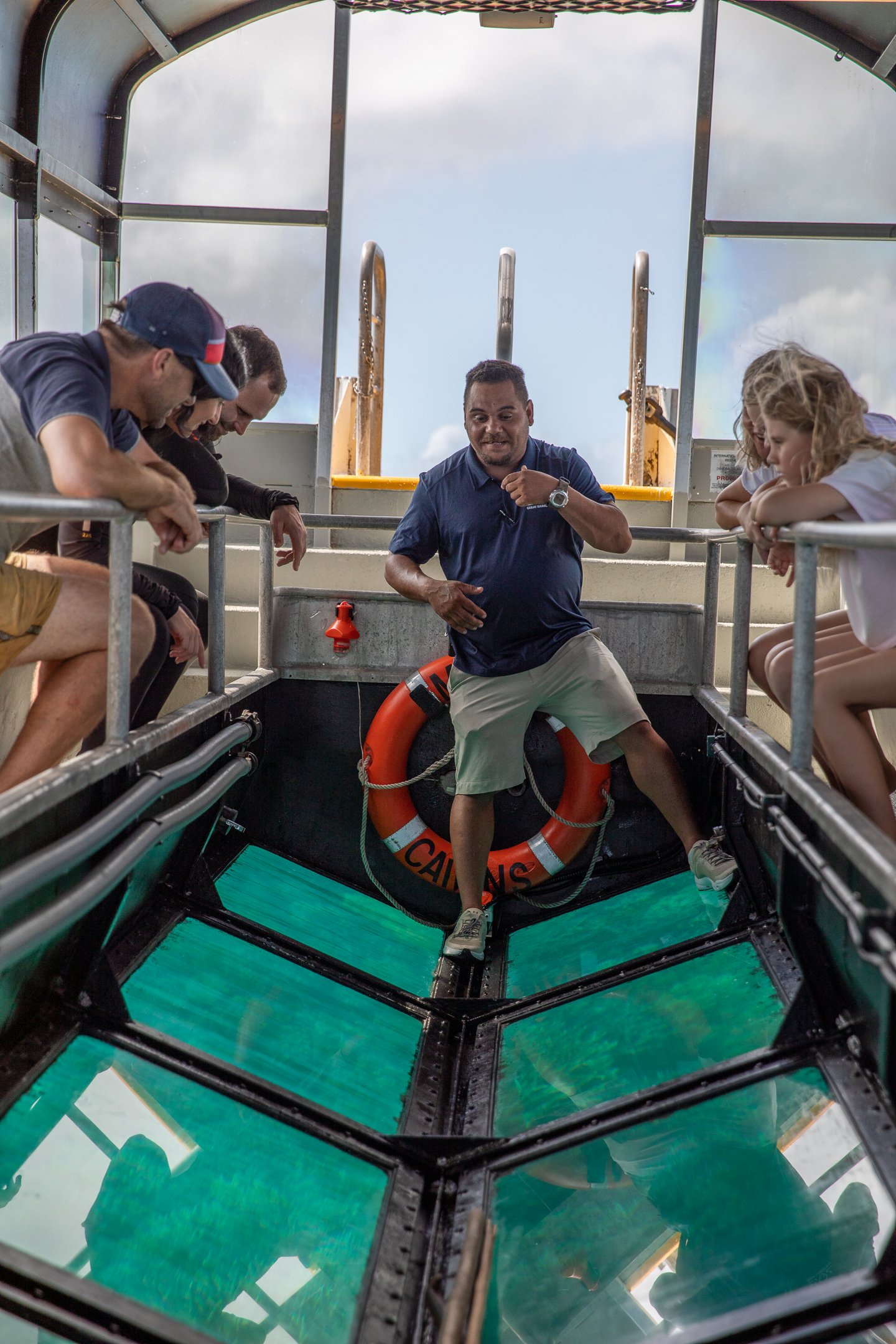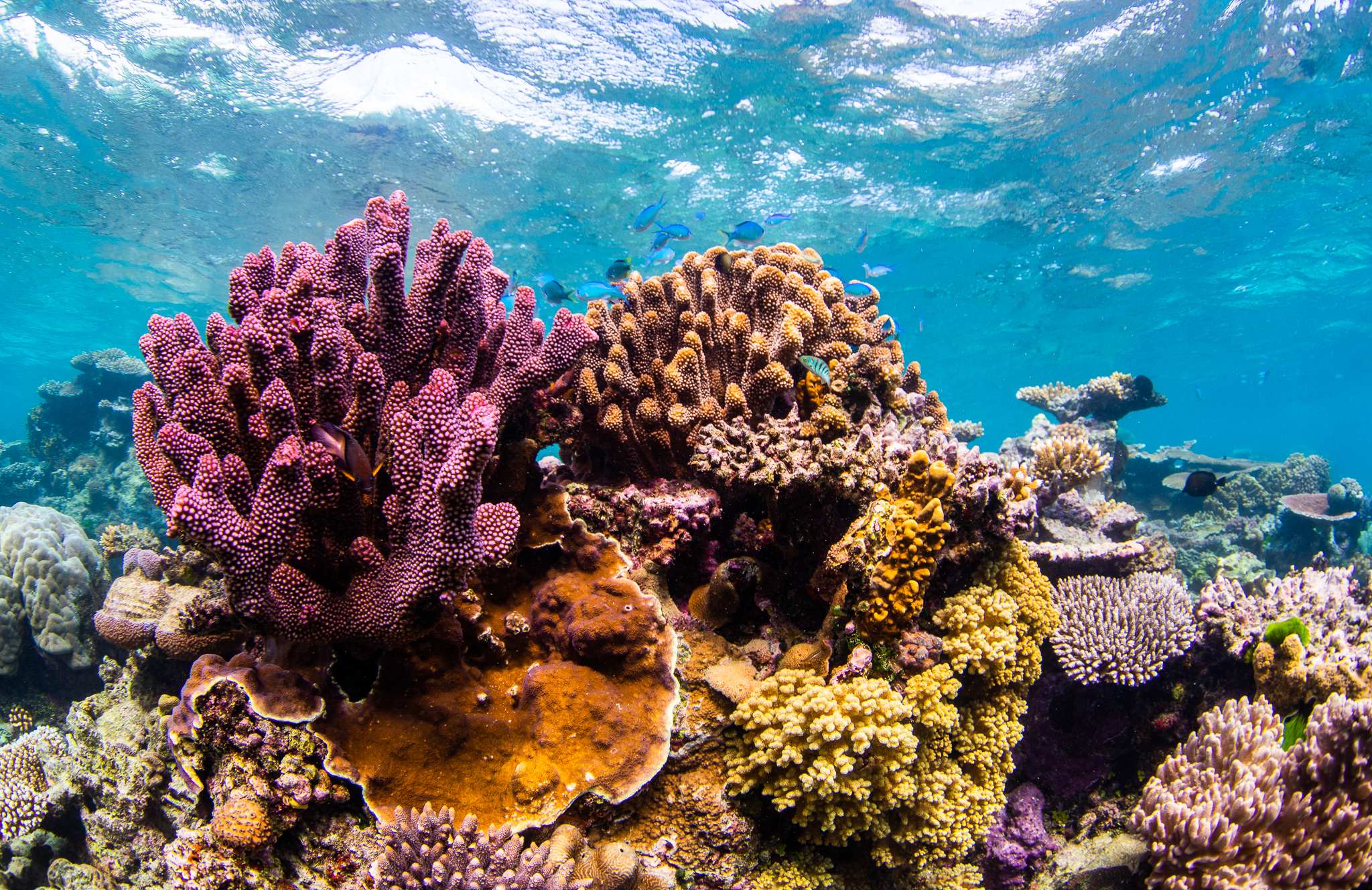Kulbul - Spirit of Sea Country
The Kul-bul Decision Tree is a model that incorporates step by step decisions to identify and bring together the cultural significance, cultural engagement, biological and natural resilience indicators and site stewardship recommendations of a specific coral reef site. It uses the knowledge of several well-known coral reef monitoring programs such as Eye on the Reef and or Reef Check. The Kulbul project also created its own methodology (See appendices) to measure various biological and natural indicators that can be incorporated into existing monitoring programs to add an extra layer of information on coral spawning and recruitment
rates.
Through the assessment approach, the Kul-Bul Decision Tree documents coral reef processes to gauge if a coral reef site can likely recover naturally following a disturbance, of if intervention may be necessary. Some intervention or site assisted recovery actions include coral predator control, coral rubble stabilisation, coral nurseries, coral gardening and coral larval reseeding.
This manual presents the Kul-Bul Decision Tree (page 13) that was used to produce site stewardship plans for sites on Hastings, Saxon and Norman Reefs within Yirrganydji Sea Country. Working examples of the Kul-Bul Decision Tree are provided for each coral reef and shows the data used to arrive at the appropriate decision on actions to take in the further conservation and management of these reefs. Instructions, along with the appendices are provided to assist in the use of this proactive tool.
As an example of how First Nation Traditional Owner/Custodian Ecological Knowledge can be included in a combined assessment of a coral reef, a seasonal calendar (see back cover) was designed which incorporates Yirrganydji language. The Calendar illustrates the connections between land and sea. The plants are rough indicators for seasonal changes throughout the year and lines up with marine life. There is always interannual variations between the timing of season and this may result in plants or fruit flowering early or late, which can indicate the presence and behaviour of certain marine animals.
The project backstory
The overall objective of this project was to create a collaborative framework between stakeholders and First Nations Traditional Owners/Custodians. This created a two-way sharing of knowledge and skill development through early consultation, agreements and ongoing engagement and inclusion. The Kul-bul project was co-designed and co-managed with Traditional Owners/custodians, the Yirrganydji people.
The name Kul-bul was selected to name this project, as it was an Yirrganydji word from the Yirrgay dialect that translates to the “Spirit of Sea Country”. The logo designed by Yirrganydji man Tarquin Singleton with a three-prong fishing spear surrounded by coral reef. In this case the three prongs represent the three partners involved, which includes, the Dawul Aboriginal Corporation for the Yirrganydji community, Reef Restoration Foundation and GBR Biology (Reef Unlimited/Experience Co.)


Kulbul - Spirit of Sea Country
The Great Barrier Reef is a global natural icon utilised by multiple stakeholders and receives nearly two million visitors each year. No wonder this extraordinary large diverse coral reef system is part of the psyche of most human beings. In the age of anthropogenic climate change, now more than never, feel connected to the Great Barrier Reef. The call to action to do more to conserve and promote this natural wonder resonates strongly.
The first nations people of Australia are the first custodians of the Great Barrier Reef with a physical and spiritual connection that has lasted tens of thousands of years. Since colonisation this connection has been disrupted drastically and left emotional scarring. In recognition of this disruption, we have seen increasing efforts from all Australians in recent decades towards reconciliation and inclusion of First Nations Traditional Owners/Custodians to manage their Country. What has become more apparent in recent years and not to be underestimated, is the wealth of knowledge the First Nations Traditional Owners/Custodians of the Great Barrier
Reef possess, that will be crucial to the future protection and management of this World Heritage Icon.
Yet one most notable consideration is how to include First Nation Traditional
Owner/Custodian knowledge of Country and management that is culturally sensitive and thoroughly inclusive of our First Nations people. The Kul-bul Decision Tree was developed to recognise and include First Nations Traditional Owner/Custodian Culture in how we work on a coral reef within the Great Barrier Reef.


